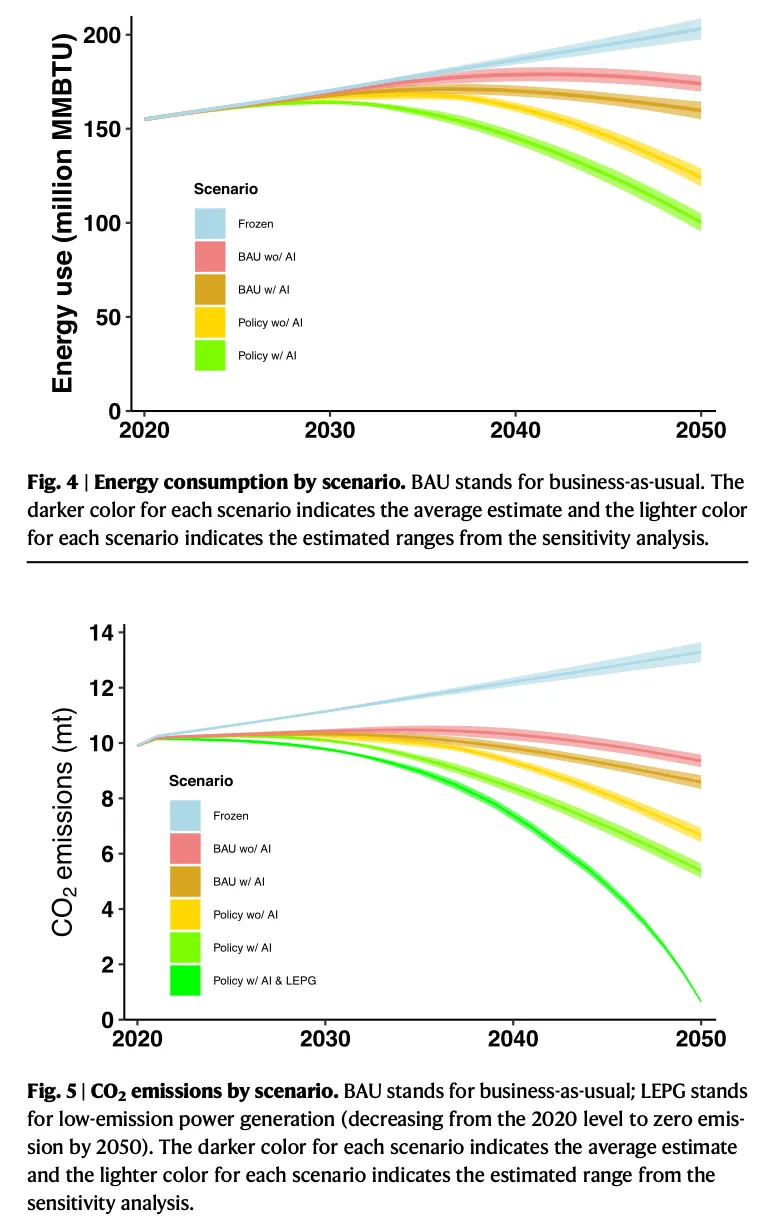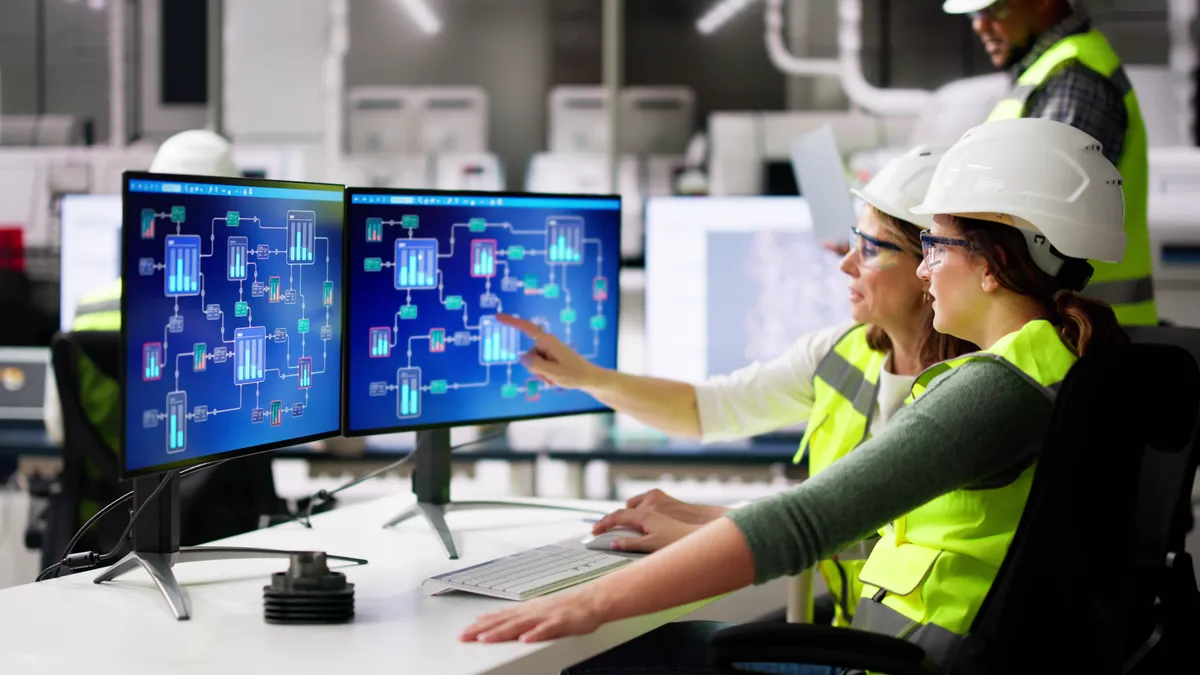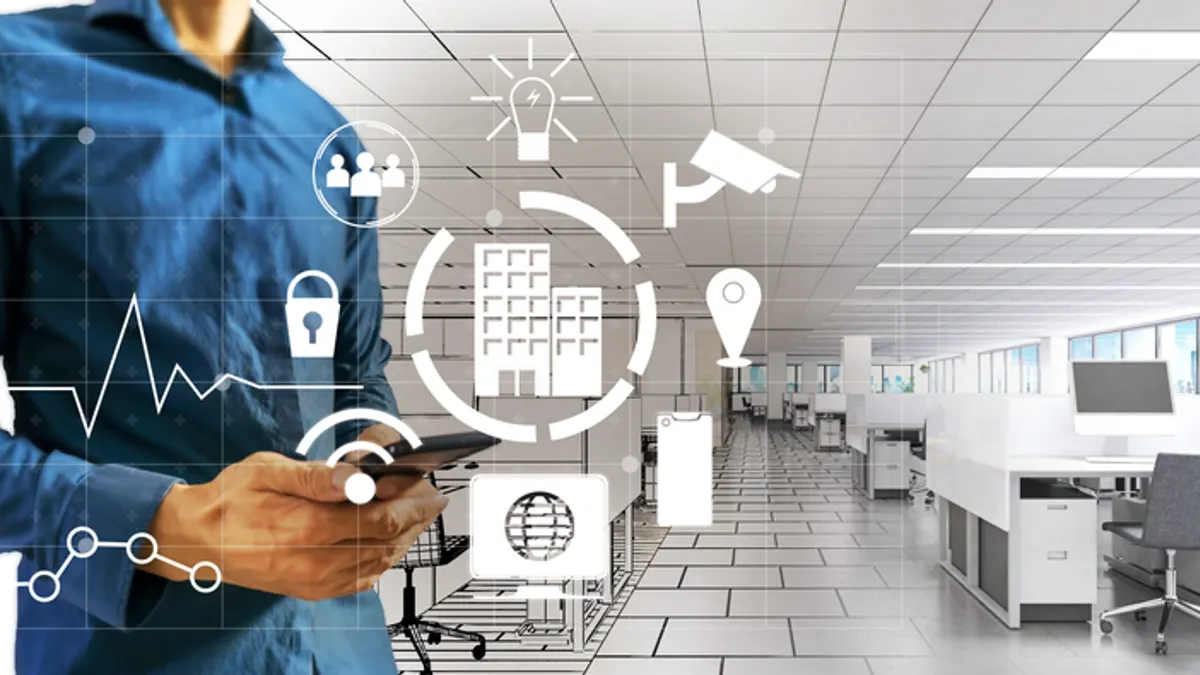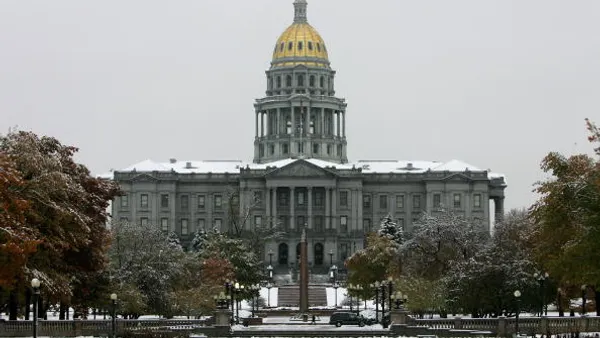Dive Brief:
- Artificial intelligence could reduce energy consumption and carbon emissions in the building sector by approximately 8% by 2050, according to a peer-reviewed paper published in July by researchers at the Lawrence Berkeley National Laboratory.
- Energy use is predicted to peak in 2040 under a business-as-usual scenario without AI implementation, which considers continued technology improvement and increased shares of highly efficient and net-zero buildings in new construction and retrofits. Introducing AI to equipment, occupancy influence, control and operations and design and construction would shorten that peak to around 2035, the researchers say.
- When combined with energy policy and low-carbon generation, AI-driven energy use and carbon emission reductions could grow to 40% and 90% in 2050, respectively, compared with a business-as-usual scenario, according to the authors. If there were no energy efficiency improvements or policy support, building energy consumption would keep increasing, according to the paper published in Nature Communications.
Dive Insight:
The research, which focused on medium-sized office buildings in the U.S., forecasts AI’s potential to reduce energy consumption and carbon emissions through six scenarios. These include a “frozen” scenario that uses current building efficiency as a baseline, two business-as-usual scenarios with and without adopting AI, and three policy-driven scenarios.
The researchers, who say they operated on the assumption that AI could cut building costs by 10%, estimate that adopting AI could generate cost savings and revenue that account for over 10% of annual on-site energy costs. AI adoption, along with robotics and Internet of Things applications, can cut building costs by up to 20%, the researchers say.
While adopting AI in a business-as-usual scenario can cut energy use and carbon emissions by about 8%, the potential for such reductions is even more pronounced when compared with the “frozen” scenario, where the market shares of baseline buildings, or buildings with average energy efficiency, high energy efficiency buildings and net-zero energy buildings remain unchanged from their proportions in 2020, all the way through to 2050, the study suggests. Through AI adoption, building energy use can decline by 21%, while carbon dioxide emissions would be 35% lower, compared with the “frozen” scenario, according to the results of the study.

Meanwhile, major policy measures include the promotion of efficiency technologies, implementation of building codes and energy efficiency standards, incentives, subsidies, financial assistance and government-funded programs, the study says.
These policies were constructed based on the pathway to the Long-Term Strategy of the United States, published in November 2021 by the U.S. State Department and the U.S. Executive Office of the President, the researchers say. That paper lays out a goal of 100% clean electricity by 2035 — a crucial foundation for net-zero greenhouse gas emissions no later than 2050.
The policy scenario spans four pathways — reduced cost premium for highly energy-efficient or net-zero energy medium office buildings, an increase in the retrofit share of existing commercial buildings to boost their energy efficiency, an increase in the share of new commercial buildings that achieve net-zero status and an increase in the share of retrofitted commercial buildings that achieve net-zero status.
Adopting AI in the policy scenario can help reduce energy consumption and CO2 emissions by roughly 19% in 2050, compared with the policy scenario without AI, the LBNL researchers say.
When paired with policy measures, AI could reduce energy consumption by approximately 40%, compared with the business-as-usual baseline and by about 50%, when compared with the “frozen” scenario, according to the paper.
To achieve the carbon neutrality target, the low-emission power generation scenario also assumes a decrease in carbon emission from the 2020 level to zero emissions in 2050. Adding LEPG would help achieve a near zero-emission target in 2050, providing savings of 93% and 95% from the business-as-usual and frozen scenarios, respectively.
The International WELL Building Institute underscored AI’s potential impact on building energy consumption and emissions reductions in its AI Framework for Advancing Healthy Buildings, released June. In a case study examining AI applications in building management systems, IWBI said that by implementing digital twins and AI, operators can send live feeds of data from an entire building into a computational model of the building and then draw on AI to analyze that data.
“By continuously analyzing these data from the digital twin, the AI element can automatically open or close doors and windows, or increase or decrease the strength of fans throughout a building,” the IWBI report said.
Correction: A previous version of this story misstated the energy savings estimated from implementing AI. When combined with policy measures and low-carbon generation, building carbon emissions can decline over 90% by 2050 compared with business-as-usual scenarios, the researchers said.












